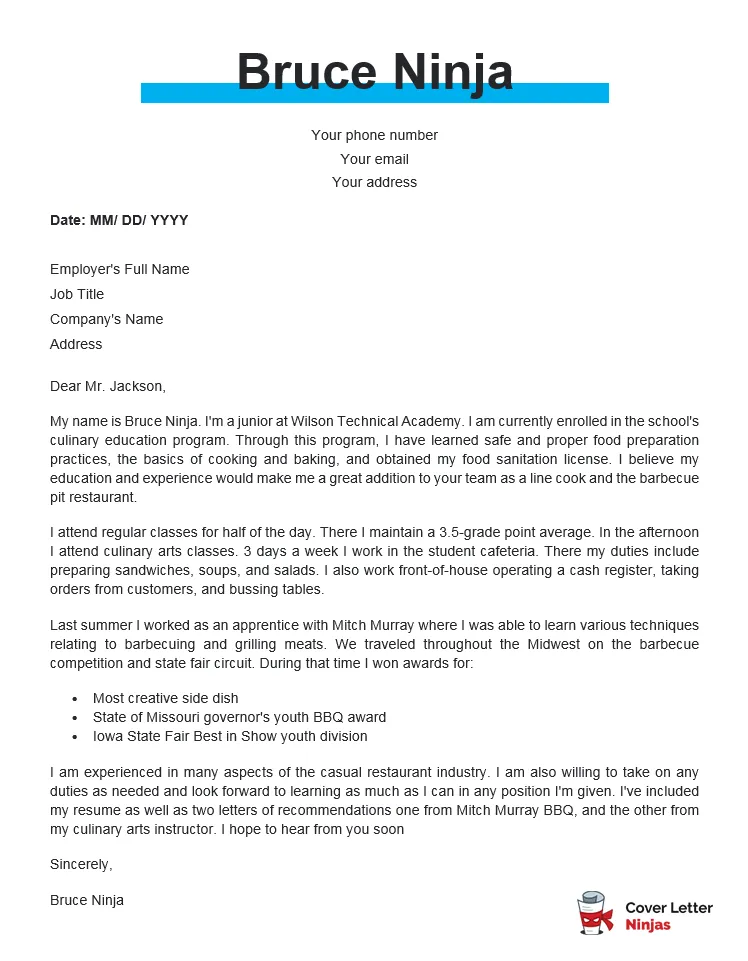What is a Student Cover Letter
A student cover letter is a crucial document that accompanies your resume when applying for jobs, internships, or other opportunities. It serves as your introduction, providing a glimpse into your personality, skills, and aspirations. Unlike a resume, which provides a factual overview of your experience, a cover letter allows you to elaborate on why you are a suitable candidate and express your enthusiasm for the specific role or company. It is a vital tool for students seeking to make a strong first impression on potential employers and differentiate themselves from other applicants.
Why is a Cover Letter Important
A well-crafted cover letter is important for several reasons. It allows you to explain any gaps in your resume, such as periods of unemployment or career changes. It demonstrates your communication skills, which are highly valued by employers. Furthermore, it provides an opportunity to showcase your personality and enthusiasm for the position, making you more memorable. It helps you highlight your relevant skills and experiences in a way that is tailored to the specific job requirements. In essence, a cover letter shows that you have taken the time to understand the role and the company, setting you apart from candidates who only submit a resume.
Highlighting Skills
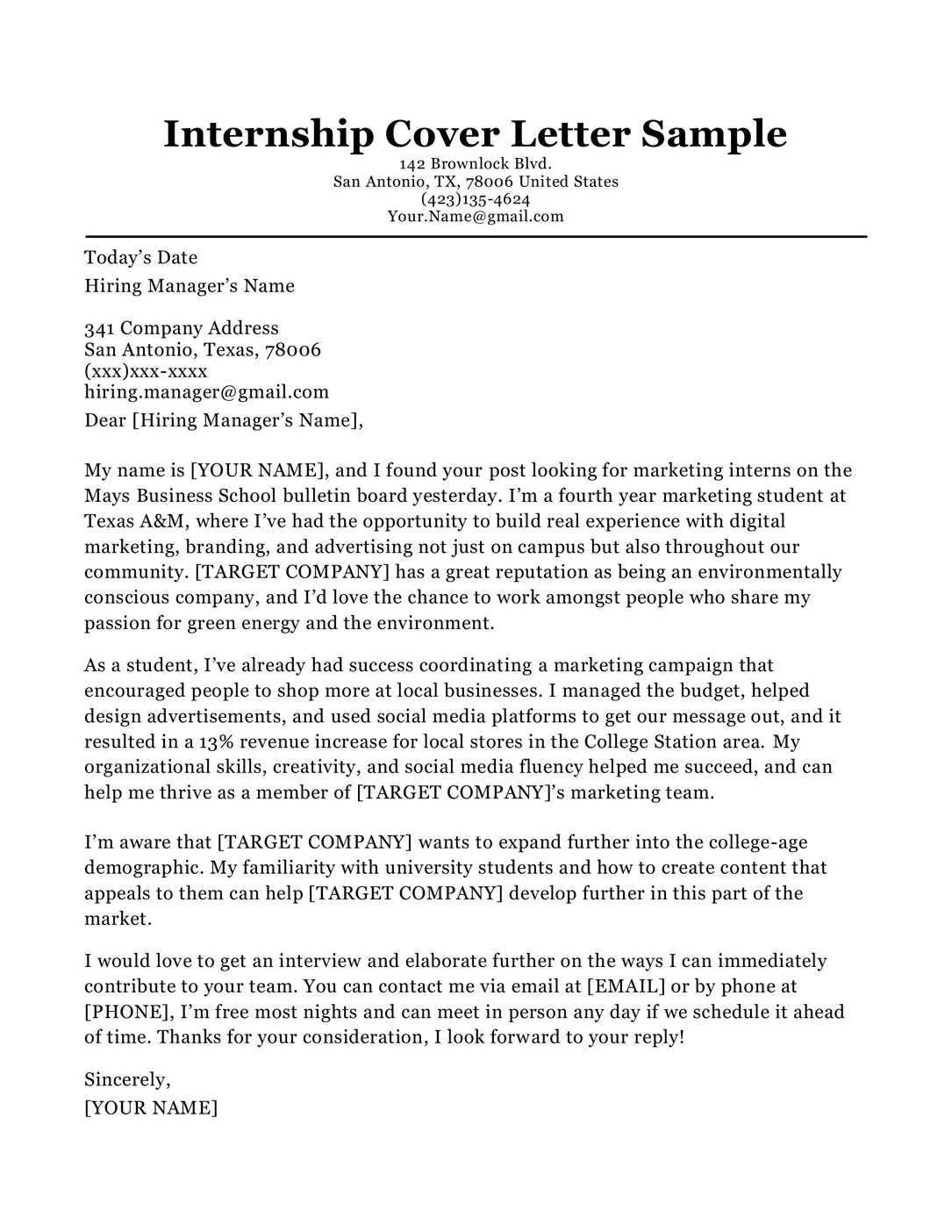
Highlighting your skills effectively is a key aspect of any student cover letter. When describing your skills, it’s important to focus on those that are relevant to the job you are applying for. Use action verbs to demonstrate what you have achieved. For example, instead of saying “Responsible for customer service,” say “Provided excellent customer service by resolving inquiries and complaints efficiently.” Also, be sure to provide concrete examples to support your claims. If you mention teamwork, describe a project where you collaborated effectively with others. By quantifying your achievements whenever possible, you make your cover letter more compelling and demonstrate the value you can bring to the role.
Cover Letter Structure
A well-structured cover letter follows a standard format that makes it easy for the hiring manager to read and understand. Adhering to the proper structure can help you present your information clearly and persuasively. The general structure consists of a header with your contact information, a salutation, an introductory paragraph, two or three body paragraphs, a closing paragraph, and your signature. By following this format, you demonstrate professionalism and ensure that you communicate all the necessary information effectively. Each section plays a specific role in conveying your qualifications and your enthusiasm for the opportunity.
Header Information
The header should include your full name, address, phone number, and email address. This information is crucial for the employer to contact you. Also, you should include the date and the hiring manager’s name and title, if available. If you are unsure of the hiring manager’s name, you can usually find this information on the company website or LinkedIn. Addressing the letter to a specific person shows that you have done your research and that you are genuinely interested in the opportunity. Proper formatting of the header ensures that the employer can easily reach you.
Salutation
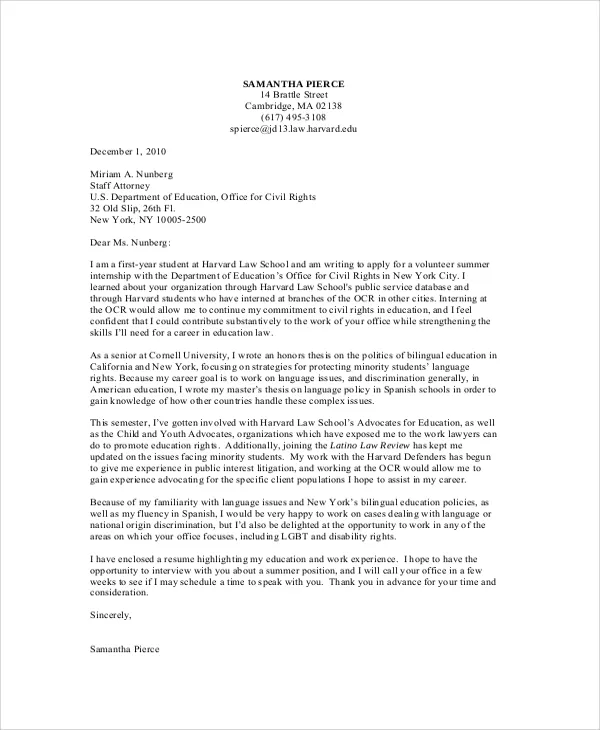
The salutation should be professional and appropriate. The most common and preferred salutation is “Dear [Hiring Manager name],” If you don’t know the name of the hiring manager, you can use “Dear Hiring Manager” or “Dear [Department] Team.” Avoid informal greetings like “Hi” or “Hello.” Ensure you spell the hiring manager’s name correctly, and if you’re unsure of the gender, it’s better to use the full name. A professional salutation sets the tone for the entire letter and shows respect for the reader.
Body Paragraphs
The body paragraphs are the heart of your cover letter, where you provide details about your skills, experience, and enthusiasm for the role. The body paragraphs should be concise, well-organized, and tailored to the specific job you are applying for. They should highlight your most relevant qualifications and explain why you are a good fit for the position. It is important to tailor each cover letter to the specific job description and company, demonstrating that you have taken the time to understand their needs and values. Always proofread the body paragraphs for grammar and spelling errors to ensure they present you in the best possible light.
First Paragraph Start Strong
Your first paragraph should grab the reader’s attention and clearly state the purpose of your letter. Begin by mentioning the specific position you are applying for and where you found the job listing. Then, state your strongest qualification or the most compelling reason why you are interested in the role. Show enthusiasm and briefly mention what attracted you to the company. The goal is to make a positive first impression and encourage the hiring manager to continue reading. A strong opening will hook the reader and make them want to learn more about you and why you’re a good fit for the job.
Second Paragraph Skills Showcase
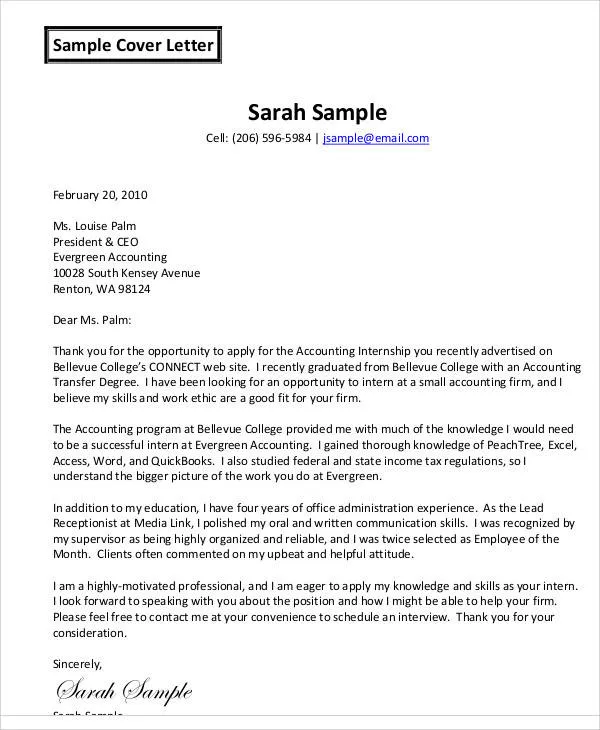
The second paragraph is your opportunity to highlight your skills and experiences that are most relevant to the job. Focus on the key requirements mentioned in the job description and provide examples of how you have demonstrated these skills in the past. Use action verbs to describe your accomplishments and quantify your achievements whenever possible. For example, instead of saying “Managed social media accounts,” say “Increased social media engagement by 30% by implementing targeted content strategies.” Show how your skills align with the company’s needs and what you can bring to the team. Be concise and impactful, providing specific evidence to support your claims.
Third Paragraph Call to Action
In the third paragraph, express your enthusiasm for the opportunity and reiterate your interest in the position. Briefly mention what excites you about the company or the role. Then, make a clear call to action, stating that you look forward to hearing from them and are available for an interview. You can also mention that you are available to provide additional information or references if needed. Ending with a strong and professional closing will solidify your interest and encourage the hiring manager to take the next step in the hiring process. It’s also a great place to thank them for their time and consideration.
Closing and Signature
The closing of your cover letter should be professional and courteous. Use a standard closing phrase such as “Sincerely,” “Best regards,” or “Thank you for your consideration.” Follow this with a blank line for your signature. If you are submitting a digital cover letter, you can simply type your name. Ensure your signature is legible if printing the document. Your typed name should always appear beneath your signature. A professional closing and signature complete your cover letter and leave a lasting impression.
Formatting Guidelines
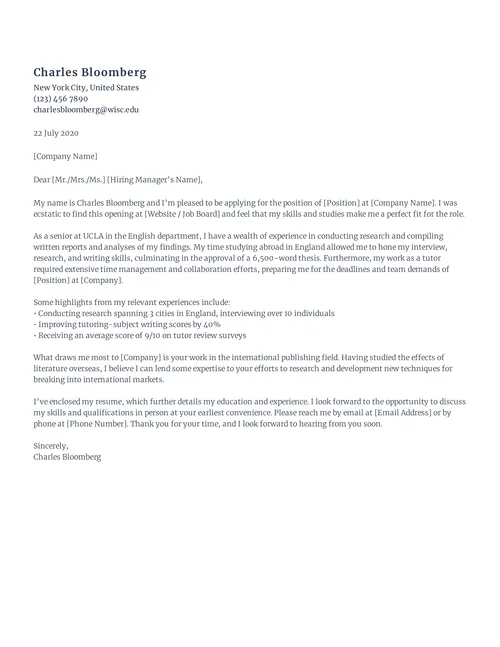
Proper formatting is crucial to ensure your cover letter is easy to read and professional-looking. Adhering to formatting standards can significantly impact how a hiring manager perceives your application. Well-formatted cover letters show attention to detail and professionalism. Therefore, always use a clear and readable font, appropriate margins, and proper spacing to present your information in a concise and organized manner.
Font and Size
Choose a professional and easy-to-read font such as Times New Roman, Arial, or Calibri. The font size should be between 10 and 12 points. Using a standard font and size ensures your cover letter is legible and presents a professional image. Avoid using overly stylized or decorative fonts, as they can be distracting and difficult to read. Consistent font usage throughout your cover letter contributes to a polished appearance and improves the overall readability.
Margins and Spacing
Set the margins to be 1 inch on all sides of your document. Use single spacing within paragraphs and double spacing between paragraphs and sections. Proper margins and spacing create a balanced layout and prevent the document from appearing cluttered. Consistent spacing enhances readability, making it easier for the hiring manager to review your application. Proper spacing creates visual separation, which helps organize the information and makes the cover letter more visually appealing.
Proofreading
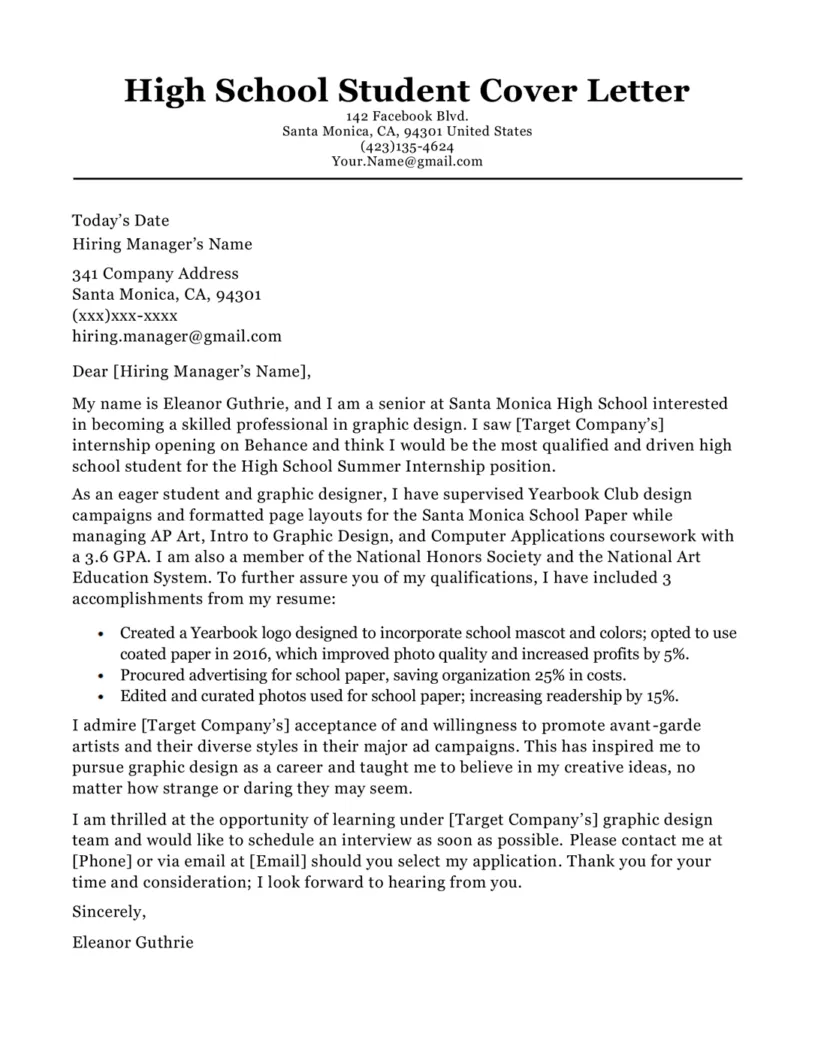
Proofreading is essential to catch any typos, grammatical errors, or inconsistencies in your cover letter. Always proofread your cover letter multiple times and ask a friend or career advisor to review it as well. Ensure your cover letter is free of spelling and grammatical errors, as these errors can create a negative impression. Careful proofreading shows that you pay attention to detail and care about the quality of your work. Proofreading makes sure that your cover letter reflects well on your writing skills and professionalism.
Cover Letter Examples
Reviewing cover letter examples can help you understand the format and style. Seeing real-world examples can provide you with a clear understanding of what a good cover letter looks like. Use examples to see how other students have highlighted their skills and tailored their letters to different types of opportunities. By studying well-written examples, you can better understand how to showcase your qualifications effectively and create a compelling application. Remember to personalize the example and don’t plagiarize. Use examples as inspiration for your own writing.
Example 1 Internship
If applying for an internship, your cover letter should emphasize your academic background, relevant coursework, and any previous internship or volunteer experiences. Highlight the skills you have developed through your studies and any extracurricular activities. Explain how your skills align with the internship’s requirements and express your enthusiasm for the opportunity to learn and grow. In the first paragraph, you would clearly state the position, followed by a brief statement on how your skills will contribute to the company. The skills and experience sections should provide specific examples. Lastly, your closing should state the anticipation of the response.
Example 2 Part-time Job
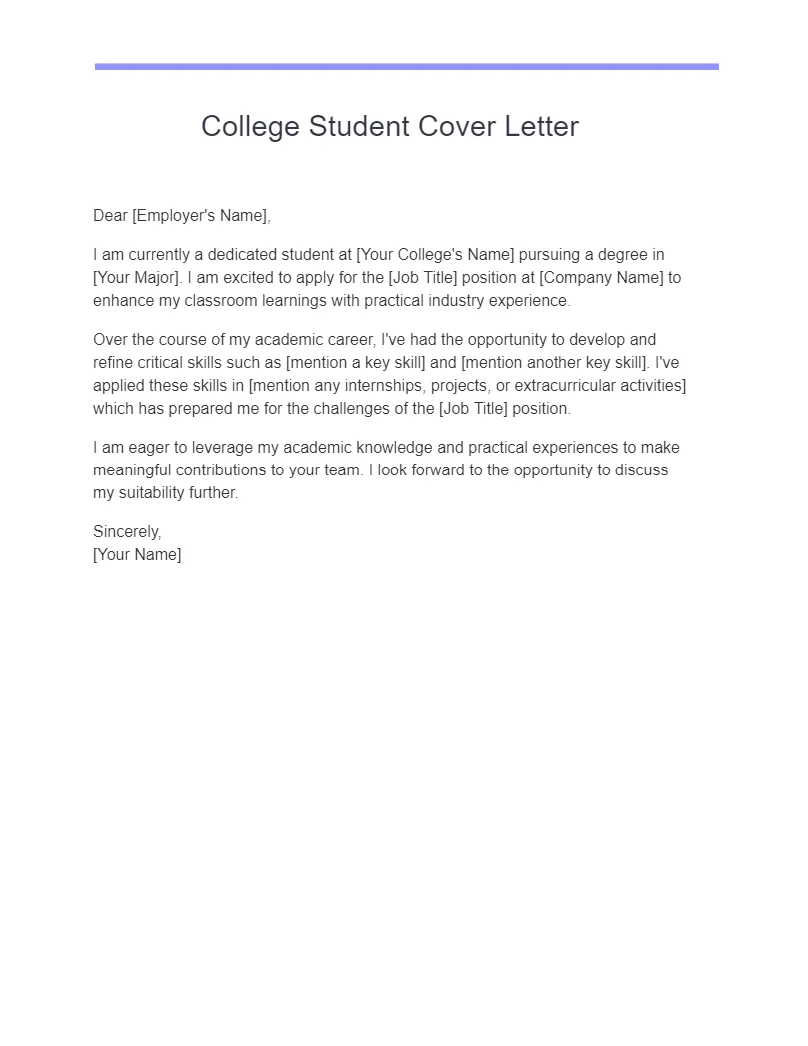
For a part-time job, focus on your reliability, time management skills, and ability to balance work and studies. Highlight any customer service experience or relevant skills. Show how you can contribute to the company while managing your academic responsibilities. You should also highlight your availability and willingness to work flexible hours. The first paragraph should state the position, and where you came across the job description. Next, state why your skills and experience would contribute to the company. Include a clear statement of availability, closing with an anticipation of a response.
Common Mistakes to Avoid
Avoiding common mistakes can greatly improve the effectiveness of your cover letter. By being aware of the pitfalls, you can ensure that your application makes a positive impression. This section highlights some of the most frequent mistakes students make when writing cover letters, providing guidance on how to avoid them. By addressing these potential issues, you can make your cover letter more effective and increase your chances of landing an interview.
Typos and Grammatical Errors
Typos and grammatical errors can undermine your credibility and professionalism. Always proofread your cover letter carefully before submitting it. Use a spell checker and grammar checker, and ask someone else to review your letter. Errors can make it appear that you lack attention to detail and that you are not serious about the job application. Review your work several times to ensure that your cover letter is polished and error-free. A well-written cover letter, free of errors, can significantly enhance your chances of making a positive first impression.
Generic Letters
Sending a generic cover letter without tailoring it to the specific job is a common mistake. A generic cover letter indicates that you have not taken the time to understand the company or the role. Always customize your cover letter to the requirements of each job you are applying for. Research the company and the position, and highlight the skills and experiences that are most relevant. Address the hiring manager by name, if possible, and show genuine interest in the opportunity. A tailored cover letter shows that you have put in effort and are genuinely interested in the position.
Ignoring Instructions
Carefully read the job description and follow all instructions provided. If the job posting asks for specific information or requires you to submit your application in a certain format, make sure to comply. Failing to follow instructions demonstrates a lack of attention to detail and may result in your application being overlooked. If the job description requires specific information, be sure to provide it. Pay attention to any formatting or submission guidelines, and ensure you fulfill all requirements.
Tailoring Your Cover Letter
Tailoring your cover letter to each job application is essential. This ensures that your application is relevant and highlights the skills and experiences that are most important to the employer. Use the job description to identify the key skills and requirements, and then emphasize your qualifications and accomplishments in the cover letter. Show how your skills align with the company’s needs and explain why you are a good fit for the role. Tailoring your cover letter can greatly improve your chances of making a positive impression and increasing your chances of securing an interview. Personalization will help you stand out from other applicants.
